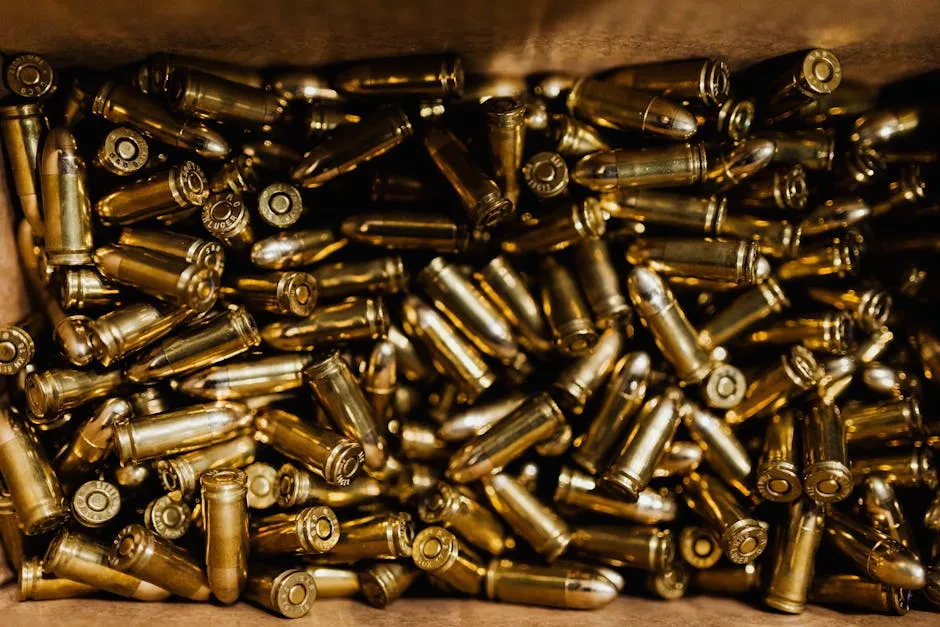Introduction
Reloading ammunition is a rewarding hobby. However, it comes with risks. Accurate reloading data is crucial for safe practices. Using incorrect data can lead to dangerous situations. This article will guide you through the importance of reliable data. We’ll cover sources, types of powders, and key concepts.
Summary and Overview
Accurate reloading data is essential for safety and performance. It helps you create ammunition that functions properly in your firearm. Reliable data ensures you avoid dangerous overloads. Various sources exist for obtaining this data. You can consult reloading manuals, manufacturer websites, and online databases.
We’ll discuss several powder types and calibers as well. Understanding powder burn rates is vital for effective load development. Additionally, load specifications will play a significant role in your reloading success. Remember, using verified data can make all the difference in your reloading journey.
Speaking of verified data, if you’re looking for a comprehensive guide, check out the Hodgdon Reloading Manual. It’s a must-have for any serious reloader!
Understanding Reloading Data
What is Reloading Data?
Reloading data refers to specific information for handloading ammunition. It includes details like bullet weight, type of powder, and charge weight. Accurate load specifications help create safe and effective rounds. These specifications guide you on how to mix components correctly.
Understanding load specifications is crucial for performance. They provide a foundation for safety. Pressure and velocity are key factors in reloading. Pressure indicates how much force is exerted in the chamber. Velocity measures how fast the bullet travels when fired. Both elements affect accuracy and firearm integrity.
Sources of Accurate Reloading Data
You can find accurate reloading data from various trusted sources. Reloading manuals are a primary option. Popular brands like Hodgdon and Accurate Powders offer comprehensive guides. These manuals provide tested loads for numerous calibers and powders. If you want to delve deeper, consider the Accurate Reloading Manual for even more insight!
Manufacturer websites are also valuable. Companies like Hodgdon and Accurate Powders share updated load data online. These sites often include user-friendly databases for quick searches. Online communities and forums can be helpful too. They allow reloaders to share experiences and tips.
Always prioritize reliability when selecting sources. Look for information that comes from reputable manufacturers or established organizations. This ensures you access trustworthy data for your reloading needs.

Importance of Using Verified Load Data
Using verified load data is vital for safety. Incorrect or outdated data can lead to dangerous situations. Overloading can cause firearm failure, resulting in injuries. Starting loads are especially important. They provide a safe baseline to begin your reloading process.
Pressure guidelines help you avoid exceeding safe limits. Always adhere to these specifications to ensure your safety and your firearm’s longevity. Remember, accuracy and safety go hand in hand in the reloading process. Commit to using verified data for the best results.
Using verified data is essential for safety in reloading. You can find reliable information in various sources, including accurate reloading data.
Types of Powders and Their Characteristics
Overview of Different Powder Types
When it comes to reloading, understanding powder types is essential. Two main categories are smokeless and black powder. Smokeless powder is the most common choice for modern ammunition. It burns cleanly, producing less smoke and higher pressures. Black powder, on the other hand, is older and often used for historical firearms or specific competitions.
Within smokeless powder, you’ll find single-base and double-base types. Single-base powders contain nitrocellulose only, while double-base powders include both nitrocellulose and nitroglycerin. The latter generally burns hotter and faster, making them suitable for high-performance loads.

Commonly Used Powders in Reloading
Several powders are popular among reloaders. Here’s a quick look at some of them:
- Accurate No. 2: Fast-burning and ideal for light handgun loads.
- Accurate No. 5: Versatile and works well for various calibers.
- Accurate No. 9: Great for high-power loads in magnum handguns.
- Hodgdon H4350: A reliable choice for long-range rifle cartridges.
- Hodgdon Varget: Excellent for precision loads in .223 and .308 calibers.
Each of these powders serves different applications. Selecting the right one ensures optimal performance based on your firearm and intended use. If you’re looking for a high-quality powder measure to help you with that, check out the RCBS Powder Measure. It’s a game-changer for consistent loads!
Understanding Burn Rates
Burn rates are critical to reloading. They indicate how quickly a powder ignites and burns. Faster powders are suitable for lighter loads, while slower powders work best for magnum and heavy loads.
To find burn rate charts, check reputable reloading manuals or manufacturer websites. These charts help you compare different powders, allowing for informed choices.
Understanding burn rates impacts load development significantly. A fast-burning powder can lead to higher pressures quickly, while a slower option provides more flexibility for adjustments. This knowledge is key to crafting safe and effective loads.

How to Use Reloading Data Effectively
Finding the Right Data for Your Caliber
Finding accurate load data specifically for your caliber is crucial. You can start by checking reputable reloading manuals. Brands like Hodgdon and Accurate Powders offer comprehensive guides. These resources list loads for various components and calibers.
Online databases are another great option. Websites from powder manufacturers provide up-to-date data. Simply search by your specific caliber to get tailored load information. To keep your data precise, consider investing in a Frankford Arsenal Electronic Scale. It will help you measure your powder charges with precision!
Matching components is key to safe reloading. Ensure you use the correct bullet, primer, and powder. Each component affects pressure and performance. Mismatched components can lead to dangerous situations. Always refer to verified data to ensure compatibility.

Adjusting Loads for Different Firearms
Different firearms may require load adjustments. Factors like barrel length and twist rate can impact performance. For example, a longer barrel usually increases velocity. A faster twist rate stabilizes heavier bullets.
Always make incremental changes to your loads. Start with the recommended starting load and gradually adjust. Testing is essential to find the optimal load for your firearm. Small changes can significantly affect accuracy and safety.
Keep detailed notes of your load adjustments. This practice helps you track what works best for your specific setup. Remember, patience is vital in achieving consistency.
Safety Practices in Reloading
Safety should always be your top priority when reloading. Start by organizing your workspace. A clutter-free area reduces the risk of accidents.
Wear protective gear, such as safety glasses and gloves. These items offer protection from potential hazards. Always handle powders with care to prevent spills or contamination.
Proper storage of components is equally important. Keep powders and primers in cool, dry places. Use original containers and label them clearly. This organization helps avoid mistakes and enhances safety.
Consistently following these safety practices will lead to a more enjoyable reloading experience. Stay vigilant and informed to ensure your reloading is both safe and effective. For cleaning your firearms, don’t forget to check out the Hoppes No. 9 Gun Cleaning Kit for maintaining your firearms!

Community and Expert Recommendations
Engaging with the Reloading Community
Reloading can feel overwhelming at first. That’s why connecting with others is so beneficial. Online forums, social media groups, and local clubs are fantastic resources. They provide a platform to share experiences and ask questions.
These communities are filled with seasoned reloaders eager to help. You can learn from their successes and mistakes. Engaging with others fosters a sense of camaraderie. Plus, you’ll discover tips and tricks that can enhance your reloading skills.
Don’t hesitate to ask questions or share your own experiences. The more you engage, the more you’ll gain. So, find your community and start connecting!

Expert Tips for Accurate Reloading
Learning from experts can elevate your reloading game. Many experienced reloaders stress the importance of consistency. Here are some best practices to ensure you achieve accurate results:
- Use a Scale: Weigh your powder charges for precision. Even small variances can lead to significant changes in performance.
- Keep a Journal: Document your loads and results. This practice helps identify what works best for your setup.
- Incremental Changes: Make small adjustments to loads. This approach allows you to fine-tune your ammunition safely.
- Quality Components: Use reliable bullets, primers, and powders. Quality materials lead to better performance and safety.
- Regular Equipment Maintenance: Take care of your reloading tools. Well-maintained equipment ensures consistent results.
By following these expert tips, you’ll enhance both safety and performance in your reloading endeavors. And if you need a reliable reloading kit to get started, consider the Lee Precision Reloading Kit. It has everything you need to start your reloading journey!

Conclusion
Accurate reloading data is vital for successful handloading. It ensures both safety and performance in your ammunition. Always prioritize verified information to avoid dangerous mistakes.
Reloading requires a commitment to precision and safety. Engage with the community and learn from experts. This helps you stay updated on best practices and new developments.
Remember, reloading is a skill that improves with experience and education. Seek reliable sources and continually expand your knowledge. Your safety and the performance of your ammunition depend on it. And for your overall safety gear, don’t miss out on the Peltor Tactical 500 Electronic Hearing Protection. Safety first!

FAQs
What is the best source for reloading data?
Using reputable sources is crucial for safety and accuracy. Top options include reloading manuals from Hodgdon and Accurate Powders. Manufacturer websites also provide updated and verified data. Online forums can supplement this information, but always verify against official sources.
How do I know if my load is safe?
Interpreting pressure signs is key. Look for flattened primers or bulging cases. Always start with lower loads, gradually increasing while monitoring for signs of excessive pressure.
Can I use reloading data from different brands interchangeably?
Mixing data from different manufacturers can be risky. Each brand may have unique formulations and testing standards. Always stick to one source for consistency and safety.
What should I do if I experience pressure signs?
If you notice pressure signs, stop loading immediately. Reduce your load by 10% and retest. Always err on the side of caution to ensure safety.
Is it necessary to chronograph my reloads?
Using a chronograph is highly beneficial. It measures velocity, helping you understand how your loads perform. This information can guide future adjustments for accuracy and consistency.
How can I ensure consistent performance in my reloads?
Focus on component selection and weighing charges accurately. Regularly maintain your reloading equipment, and keep detailed records of your loads and outcomes. Consistency is the key to reliable performance.
What should I consider when selecting a powder for my caliber?
Consider burn rate, availability, and intended use. Different powders have unique characteristics. Ensure the powder matches the performance needs of your specific caliber for optimal results.
Please let us know what you think about our content by leaving a comment down below!
Thank you for reading till here 🙂
All images from Pexels




